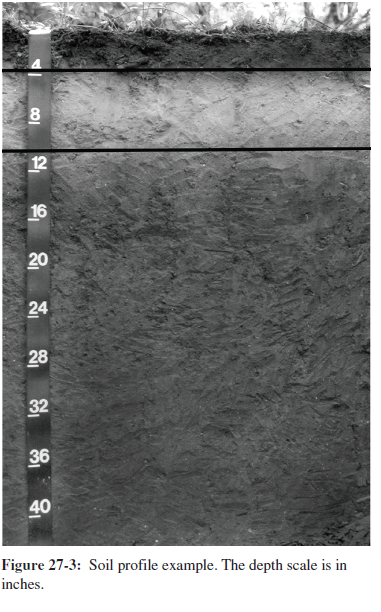An mT air mass moving onto land in the Southeastern United States during the summer time typically becomes:
A) more stable. B) more unstable.
C) saturated. D) conditionally unstable.
B
You might also like to view...
Is this soil more likely to have developed in a fairly flat area or on a steep slope? How do you know?
The following questions are based on Figure 27-3, the photograph of a soil profile. You may view this image in color by going to the Lab Manual website at www.MasteringGeography .com, or by scanning the QR code for this exercise. The depth scale is in inches.
What will be an ideal response?
Compare the Taconic, Caledonian, and Acadian orogenies in terms of the tectonic forces that
caused them and the sedimentary features that resulted. What will be an ideal response?
To create a sea breeze
A. the cool air over the land rises, creating low pressure. Warm air over water sinks, creating high pressure. This creates an onshore breeze. B. the cool air over the land sinks, creating low pressure. Warm air over water rises, creating high pressure. This creates an onshore breeze. C. the warm air over the land sinks, creating high pressure. Warm air over water rises, creating low pressure. This creates an onshore breeze. D. the warm air over the land rises, creating low pressure. Cool air over water sinks, creating high pressure. This creates an onshore breeze.
In which of the following areas will thunderstorms NOT develop?
A) In areas of orographic uplift B) Along frontal boundaries C) In areas of surface convergence D) Under areas of strong high pressure